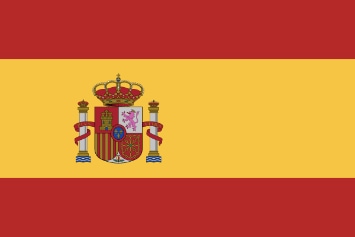September 20, 2021
Wine Production and Climate Change
Insights from Director of Winemaking Kayla Winter
We asked BevZero’s head winemaker, Kayla Winter, why the wine industry is so susceptible to negative impacts from climate change.
First, a little background. What is the life cycle of the grape?
Grape Phenology is the study of the maturation and life cycle of grapevines. The main stages within a grapevine’s life cycle are 1. Budbreak, 2. Flowering 3. Fruit Set, 4. Verasion (the ripening of the grapes), and 5. Dormancy, which lasts until the following season’s budbreak.
Winemakers wait until after Verasion to harvest as that is when the grapevine begins to produce sugar. That sugar will later be fermented by yeast to form alcohol, thus creating the delicious and versatile beverage we know as wine. The longer the fruit sits on the vine, the more sugar is produced. This is why wines harvested later in the growing season will have higher levels of alcohol. Acid levels also change during fruit maturation, but in the opposite way. Grapes harvested early will have higher levels of acidity than those that were left longer to ripen.
When and how do you prepare for harvest season?
Once Verasion hits, winemakers and viticulturalists will scout vineyards daily, taking sugar measurements and tasting the grapes to determine when to harvest. This is an extremely important step in the winemaking process—harvesting too early will result in wines with high acid and unpleasant herbaceous character, and harvesting too late will lead to overly alcoholic, flabby wines with no structure. Depending on the rate of maturation, this window of ideal ripeness could be a week, or a matter of days.
How does climate change affect the flavor of wine?
The timeline for the grape phenology cycle is partially driven by temperature. As temperature levels rise on a global scale, grapes are ripening at a much faster rate. Data published in Climate of the Past, a journal by the European Geosciences Union, tracks harvest dates in Burgundy, France all the way back to the 1300s. According to the data, harvests in that region begin on average 13 days earlier than they did prior to 1988.
Despite harvesting early, these grapes are hitting historically high levels of sugar, causing regions traditionally known for balanced wines to produce high alcohol “fruit bombs”. Stylistically, these wines can be quite popular, and have even emerged as a signature of California. But what happens when the thermostat keeps going up? Winemakers from traditionally cooler regions will be left with fruit bombs, and those used to high temperatures may not be able to produce anything palatable.
What are the biggest obstacles wine harvests face from climate change?
Apart from flavor, climate change is also putting its stamp on global yields through severe weather patterns such as droughts, floods, hail, and firestorms. It seems that every harvest we hear of ‘unprecedented hailstorms’ devastating crop yields in Europe. The word Megadrought is now being used in California, and growing regions around the world have been suffering from smoke taint due to an overwhelming surge of wildfires. These occurrences can devastate small producers in particular, whose entire livelihood may be affected by one incident. A winemaker’s main concern during harvest was at one time simply to make the best wine. Now, they must grapple with the possibility of no harvest at all.
How can the industry adapt to climate change?
There are two things we can do in response to the increasing pressures of climate change: get creative or get out of Dodge. As temperatures rise, the possibility of growing grapes in previously unaccommodating regions is enticing. Why not just move further away from the equator, somewhere with more water? Maybe reach higher elevations? The reality is that migrating agricultural areas has the potential to devastate the ecosystems in these new regions. New vineyards will lead to substantial habitat loss, possibly diminishing local waterways to fulfill irrigation needs. Before heading down this road, the industry must find a way to thrive despite the current state of the climate.
This is where creativity and ingenuity come into play. Research published PNAS shows that there is potential to alleviate concerns by diversifying and shifting grape varietals to areas more suitable to their temperature needs. Along the same line, Burgundy has begun to look at new clones of Pinot Noir that are better suited for warmer temperatures.
De-alcoholization is another way to find balance in wines from particularly hot regions. For minor alcohol adjustments such as these, only a portion of the lot needs to be processed, leaving minimal sensory impacts on the final product.
What other ideas can we come up with? As prolific as this industry is, there are thousands of bright minds working in and studying wine every day. The key is not to give up hope, not to find the easy way out. We must do what is best for the environment and the industry. The fact that this conversation is being had across global platforms is a significant step in the right direction.



